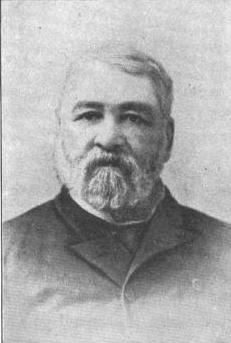Utah Territory in the American Civil War facts for kids
Even though the Utah Territory was far from the main fighting of the American Civil War, it still played a part. It helped the United States Army by providing soldiers and caused some challenges for President Abraham Lincoln's government. No big battles happened in Utah itself. However, when Union soldiers left at the start of the war, Native American tribes began raiding trails through Utah. Because of this, soldiers from California and Utah were sent to protect these important routes. Also, California soldiers found valuable minerals in Utah, which encouraged more people who were not Mormons to move there.
Contents
Union Soldiers Leave Utah
When the Civil War started in 1861, the U.S. government needed its soldiers more urgently in other places where the rebellion was growing. So, they pulled Federal troops out of the Utah Territory. This left a gap in military presence.
This allowed the Church of Jesus Christ of Latter-day Saints (LDS Church), often called Mormons, to have more control over the territory. While most settlers in the Great Salt Lake area were Mormons, the western part of Utah began to attract many non-Mormon settlers. Because of this, the Nevada Territory was created from western Utah in March 1861. Earlier that year, a large part of eastern Utah became part of the new Colorado Territory.
In October 1861, the First Transcontinental Telegraph was finished. Salt Lake City was the last place to be connected. The Mormon leader, Brigham Young, sent one of the first messages, along with President Lincoln and other important officials.
Union Soldiers Return to Utah
By 1862, the Union army had many new volunteers. The U.S. government felt it could now send soldiers back to Utah. It was very important to protect the overland mail routes and telegraph lines, which later became known as the California Trail.
Colonel Patrick Edward Connor led a group of California volunteers into Utah. His soldiers, from the 3rd California Infantry, built a small army base. It was about three miles (5 km) east of Salt Lake City, a main Mormon settlement. This base, called Camp Douglas, was officially set up on October 26, 1862. It was named after Stephen A. Douglas, a former politician from Illinois.
Colonel Connor quickly started a difficult relationship with Brigham Young and the Mormon people. He believed they were not loyal to the Union. For the rest of the war, Camp Douglas was the main base for the District of Utah.
The District of Utah was created on August 1, 1862. It covered Utah and Nevada. Colonel Connor was put in charge. Besides the California soldiers, the district was also protected by soldiers from Ohio, and parts of the 4th U.S. Cavalry and the 1st Nevada Cavalry Battalion.
Conflict with Native Americans
Shoshoni and other Native American groups had several small fights with new settlers in northern Utah and southeastern Washington Territory (which is now Idaho). This happened especially in the late 1850s and early 1860s. One event involved miners from Montana traveling through Cache Valley. This was enough for the army to send an expedition to investigate.
Colonel Connor was eager for battle. He marched his soldiers 140 miles across the frozen winter land to deal with the Native Americans. On January 29, 1863, Connor's troops found a Shoshoni camp along the Bear River. His men attacked the camp and then marched back to Utah. This event is known as the Bear River massacre.
Finding Minerals in Utah
Colonel Connor encouraged his soldiers to look for minerals in Utah. He believed that finding gold, silver, and other valuable metals would bring more non-Mormon settlers to the territory. He hoped this would change the political power balance.
His efforts worked! In 1864, his men found gold, silver, lead, and zinc in Tooele County. Just as Connor hoped, miners began to come to Utah. Soldiers set up the Rush Valley Mining District in the western Oquirrh Mountains. In the first year, more than 100 mining claims were made.
Utah's Leaders During the War
Before the Civil War, John F. Kinney was named Chief Justice of the Utah Territory by President James Buchanan. He held this position from June 1860 to March 1863. He was involved in events leading up to a local conflict in 1862. Kinney was later elected as Utah's representative to the U.S. Congress. He served from March 1863 to March 1865.
In 1861, President Lincoln appointed James Duane Doty to oversee Native American affairs for the Utah Territory. In 1863, Utah's governor, Stephen Harding, was removed from office. This happened after he criticized the LDS Church and the practice of polygamy, which caused public anger. Lincoln then appointed Doty as governor. As governor, Doty was able to improve the relationship between the U.S. government and the Mormons in the territory.
Utah's Own Civil War Soldiers
At the start of the Civil War, when Union soldiers left Utah, several Native American tribes began raiding the mail trails. To help with this, Brigham Young offered the government the services of the Nauvoo Legion, which was the Mormon militia.
After talking with the Secretary of War, Lincoln agreed to form a thirty-man cavalry company for ninety days. This group later grew to 106 men. This company tried to find those responsible for the raids. However, they never actually fought in any battles.
Civil War Army Posts in Utah
- Camp Floyd, Utah, 1858–1861; renamed Fort Crittenden, 1861–1862
- Camp Douglas, Utah 1862–1878
- Camp Cedar Swamps, Utah, 1863
- Camp Bingham Creek, Utah, 1864
- Camp Relief, Utah, 1864
- Salt Lake City Post, Utah, 1865–1866
See also
- History of slavery in Utah
- Act in Relation to Service
- Nauvoo Legion
- Soldier Summit: A place named for soldiers who died there.



